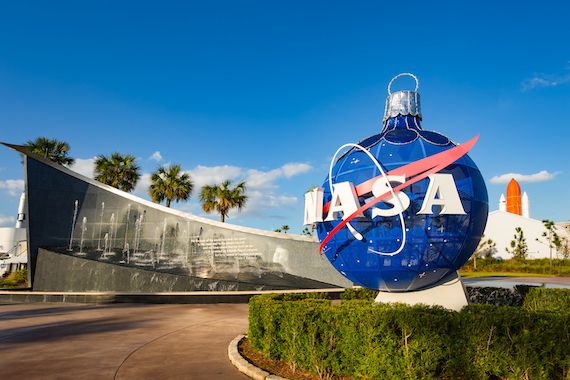
Two backup dates are possible if needed, November 19 and 25. (Photo: 123RF)
Cape Canaveral – Will it be the third time? After two failed attempts this summer, NASA was busy Monday to complete final preparations before the moon liftoff from its massive new rocket, now scheduled for Wednesday from Florida, and to announce the brilliant start of its new flagship program, Artemis.
Fifty years after the last Apollo flight, this time NASA wants to establish a permanent human presence on the Moon, in order to prepare for a future trip to Mars. The Artemis 1 mission, a test flight without an astronaut on board, is the first stage.
The SLS rocket, which is supposed to become the most powerful in the world, is scheduled to launch on Wednesday at 1:04 am local time, with a possible two-hour launch.
The countdown has already begun again at the Kennedy Space Center, where the massive orange-and-white machine is still eagerly awaiting its maiden flight.
Takeoff is scheduled for less than a week after Hurricane Nicole, whose rocket encountered winds on the launch pad.
However, the launch is still pending until Monday’s final meeting: Mission officials must determine the risks associated with the hurricane damaging a thin layer of sealant at the level of the Orion capsule, located at the top of the rocket. It is a matter of evaluating whether this substance can be separated further at the time of take-off and thus poses a problem.
Two backup dates are possible if needed, November 19 and 25.
But Mike Sarfin, who is in charge of the mission, was optimistic Sunday evening: “I have a good feeling of progress towards this attempt on November 16,” he said during a press conference.
favorable weather
For once, the weather is expected to be fair, with a 90% chance of favorable weather during the shooting window.
At the end of September, the rocket had to be returned to its assembly building to protect against another hurricane, Ian, delaying the take-off for several weeks.
Before these weather setbacks, this summer’s two launch attempts failed, in the final hours of the countdown.
The first cancellation was associated with a faulty sensor, and the second due to a fuel leak while filling the rocket tanks. The machine operates on ultra-cold liquid oxygen and hydrogen.
Since then, NASA has replaced the seal and modified its procedures to avoid thermal shock as much as possible. A new test was successfully conducted at the end of September.
Those mobilizations are now scheduled to begin Tuesday afternoon, by order of Charlie Blackwell Thompson, NASA’s first launch director.
To Mars
About 100,000 people on the coast are expected to witness this nightly takeoff, during which the rocket promises to light the sky in a large ball of fire.
The Orion capsule will be lifted by two boosters and four powerful engines under the main platform, which will separate after just a few minutes. After a final upper-phase boost, the capsule will be on its way to the moon, and it will take several days to reach it.
It won’t land there, but it will be placed in a distant orbit, even venturing as far as 64,000 kilometers behind the moon, far beyond any other habitable spacecraft to date.
Then the capsule begins to return to Earth. Its heat shield, the largest of all, must withstand a temperature half the temperature of the Sun’s surface when passing through the atmosphere.
If takeoff takes place on Wednesday, the mission will take 25 and a half days, with a landing in the Pacific Ocean on December 11.
The success of this mission is critical to NASA, which has been developing the SLS rocket for more than a decade and will invest more than $90 billion in its new lunar program by the end of 2025, according to a public review.
After this first mission, Artemis 2 will carry astronauts to the Moon in 2024, without landing there. This honor is dedicated to the crew of Artemis 3, in the year 2025 at the earliest.
The name Artemis was chosen after a female character, the twin sister of the Greek god Apollo – echoing the Apollo program, which sent twelve men to the surface of the moon between 1969 and 1972.
This time, NASA aims to send the first woman and first person of color there.
Then the space agency wants to launch the construction of a space station in orbit around the moon and a base on its surface.
There, humanity must learn how to live away from Earth, and develop all the necessary technologies – the power plant, vehicles, suits … – to make a round trip to Mars.

“Hardcore beer fanatic. Falls down a lot. Professional coffee fan. Music ninja.”






More Stories
SALES / PHOTO SALES – Nikon D850 “5 Star” Bare Body Photo Body at €2,539.00
Discovering a new turning point under the Antarctic ice sheet! What are the consequences?
Record number for an insect!